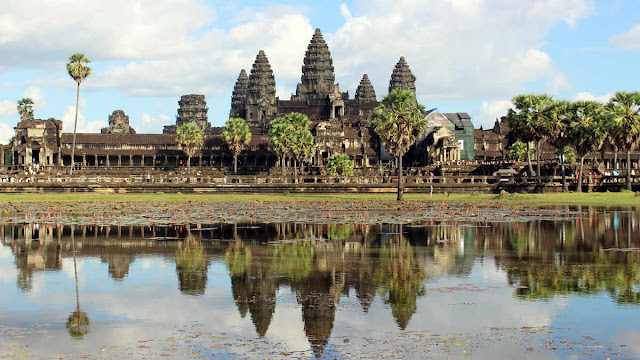
Duration: day2
Price US$ 65
What You'll Do
Price US$ 65
What You'll Do
- Tour the dramatic ruins of Angkor Wat and Angkor Thom
- Travel back in time and learn more about the Khmer Empire from a private guide
- See the major temples of Angkor, including the jungle temple of Ta Prohm and the celestial temple of Phimean Akas
- Walk along the west gate to the entrance of the Ta Keo Temple and enjoy superb views from the top
- Discover where Angkor rulers would watch their returning armies at the Elephant Terrace
- Go to an ancient Buddhist university
- Enjoy dinner at local restaurant and watch a traditional Apsara performance
- Admire the bas-reliefs of the Bayon Temple
- Watch the everyday life of sugar palm farmers
Overview
Tour the dramatic ruins of Angkor Wat on a private 2-day excursion and visit the Royal Enclosure, Phimean Akas, Banteay Samre, and more. See ancient Khmer monuments draped in atmospheric jungle, and watch a traditional Apsara performance.
What to Expect
Explore the extraordinary Angkor Wat temple complex on a private 2-day guided tour from Siem Reap, and learn more about the ancient Khmer civilization. You will enjoy Tomb Raider experiences at Angkor Wat, the largest religious site in the world, and take a circuit that encompasses the ancient city of Angkor Thom, site of the last and most enduring capital city of the Khmer Empire.
Day 1: Ta Prohm / Ta Nei / Takeo / Angkor Thom / Bayon (L/D)
08:30: Depart from your hotel in Siem Reap and drive to the jungle temple of Ta Prohm. Embraced by the roots of enormous fig trees, it is well-known as the location for the Tomb Raider movies, and was founded by the Khmer King Jayavarman VII as a Mahayana Buddhist monastery in the late 12th century.
Trek through thick jungle to the remote and peaceful temple of Ta Nei and walk along the west gate through the forest until you reach the east entrance of the sandstone Ta Keo Temple. Enjoy superb jungle views, before heading to a local restaurant for lunch.
14:00: Continue your Angkor Thom tour at Victoria Gate, one of the 5 gates of the old city. Walk to Elephant Terrace, from where Angkor rulers would view their returning armies. Continue to the Terrace of the Leper King. Admire the enclosure of the Royal Palace, and the Hindu temple of Phimean Akas (Celestial Temple).
Continue to the 3-tiered mountain temple of Baphuon, and the richly-decorated Bayon Temple, known for its impressive bas-reliefs. Return to the hotel and freshen up for dinner at a local restaurant, where you will watch a traditional Apsara performance recounting the myths of the cloud and water spirits.
Day 2: Angkor Wat / Preah Khan / Banteay Srei / Banteay Samre )L)
08:30: Depart from your hotel to visit Angkor Wat. Built by King Suryavarman II in the early 12th-Century, it is one of the most extraordinary structures in the world. A prime example of the classical style of Khmer architecture, explore the temple complex, before heading for the ancient Buddhist University of Preah Khan. Continue to Neak Pean, an island temple sitting in the tranquil pools of an ancient reservoir. Enjoy lunch at a local restaurant.
14:00: Continue your tour at Banteay Srei, the exquisite “Women’s Citadel” near the hill of Phnom Dei. En route, watch the daily life of sugar palm farmers, and visit the 12th-century Hindu temple of Banteay Samre.
Drive back to Siem Reap at the end of your extraordinary 2-day adventure. The tour ends with a hotel drop-off at approximately 17:00.
What's Included
- Transportation by private, air-conditioned vehicle
- English-speaking guide
- 2 lunches and 1 dinner, with Apsara show
- Mineral water and cold tissues during tours
What's Not Included
- Accommodation
- USD 40 for temple ticket
- All other meals and beverages
- Tips
What to Remember
- Tour extension until sunset at the temple can be provided without extra charge upon request
- An early start to catch the sunrise at the temple can be arranged upon request (extra charge)

























